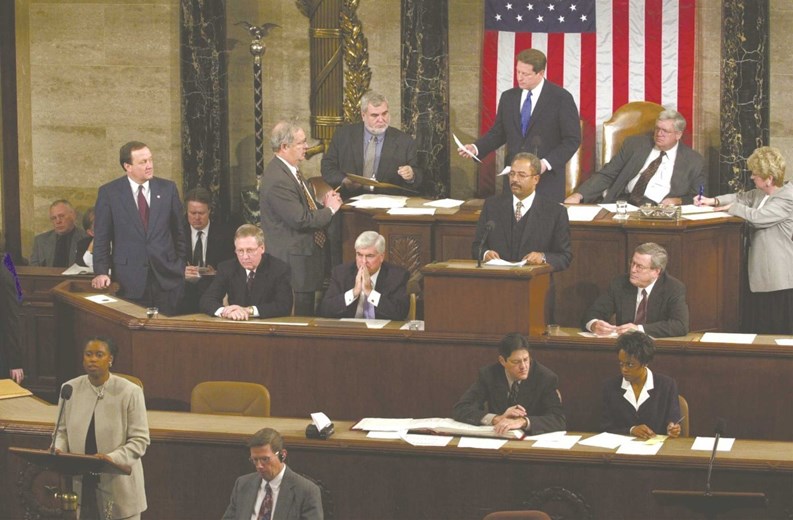Recent developments, both legislative and environmental, have led to considerable changes in the New Jersey insurance marketplace. And such changes, as managers know, often lead to added paperwork, confusing requirements, and tricky legal questions for condo boards. While many new insurance products—such as the heavily-hyped “terrorism coverage”—have failed to catch on for the condo market, modifications in traditional coverage have altered the insurance picture in ways previously unseen.
Many insurance insiders now see condos as liabilities in the wake of the Great Recession. And that, in turn, presents problems for management. Although unit owners pay reserve fees on an ongoing basis, insurers fear some managers may defer maintenance in a bad economy. When that happens, say experts, condo properties become a bad risk, producing losses that are passed on to condo associations. “Real estate values are dropping to record lows for sales,” says Judy Hennessey, an account executive at Connelly-Campion-Wright Insurance in Belmar. “And people are afraid to have work done and are unwilling to buy a new condo or sell one. I see unit owners trying to maintain an attractive cohesiveness by putting flowers out on decks and keeping their own unit in good shape.”
Insurance professionals say the recent housing bubble has led to confusion for managers and insurance agents alike. “I think the concern for insurance companies is that oftentimes condo associations may feel that the value of those condominiums have come down in price,” says Loretta Worters, vice president of communications for the Insurance Information Institute (I.I.I.), an industry trade group. “So a lot of associations tend to think they can reduce their amount of insurance because it’s based on the value, when, in fact, the cost of insurance is based on rebuilding costs.”
And the confusion doesn’t end there, explains Hennessey. “Banks are driving borrowers crazy as well as their insurance reps. Anyone who has a mortgage with a bank that was involved in taking Troubled Asset Relief Program (TARP) money is now being deluged with requests for insurance certificates—over and over again.”
Additionally, Edward J. Mackoul, president of the Island Park, N.Y.-based firm Mackoul & Associates, Inc., says that over the past several years, there were a number of instances in which board members or the property manager have stolen funds from the association, resulting in enforced requirements for fidelity bond coverage.
“At minimum, mortgage companies are requiring that each association maintain a fidelity bond limit in the amount of at least three months of maintenance,” Mackoul says. “If the association doesn't maintain an adequate amount of coverage, the mortgage company will not allow a loan to close or refinance without increasing the limit.”
More Flood Woes on Tap
Flood insurance is another area receiving increased scrutiny in recent months due to the continual floods that occur throughout Central, Coastal and Northern New Jersey, prompting FEMA last July to give the Garden State $48.3 million for flood protection.
“Increasing the number of disaster-resistant communities in New Jersey is one of our highest priorities,” says State Police Superintendent Col. Rick Fuentes, director of the Office of Emergency Management. “We also urge all New Jersey property owners to consider their situation in terms of flood insurance.”
Mackoul agrees and emphasizes the importance of the National Flood Insurance Program and the need for flood insurance. “The president signed the National Flood Insurance Program Re-Extension Act of 2010 on September 30, 2010, extending the program until September 2011. But, industry officials have been pushing for a five-year extension because the uncertainty of short-term extensions like this make it difficult for consumers and insurance agents,” Mackoul says. “Several times last year, extensions were delayed, which left people uncovered while others did not have the ability to settle on properties in flood areas.”
“Disaster losses along the coast are likely to escalate in the coming years,” says Worters, “in part because of huge increases in development. One catastrophe modeling company predicts…losses will double every decade or so due to growing density and more expensive buildings.” In fact, recent U.S. Census Bureau statistics indicate that nearly 35,000,000 people were seriously threatened by Atlantic hurricanes in 2006, up from 10,000,000 in 1950. Such statistics have made many insurers reluctant to cover coastal properties. And those who do now frequently impose costly wind deductibles.
High-Risk Business
Wind/hail deductibles—deductibles relating to damage by traditional thunderstorms—and the more-specific “hurricane deductibles” are rapidly becoming the most significant cost concerns in the aftermath of a wind-related disaster. Though the steepest wind deductibles will top out at five percent, experts say hurricane deductibles can rise even higher in risk-prone areas. Some insurers do offer traditional deductible-based wind coverage in exchange for higher premiums but you must check with your property’s own insurer as to availability.
“Many insurers have reduced the number of policyholders they insure in high-risk areas,” says Worters. “Some insurers, who have too much exposure in an area, may decide to not write in that area. While others, who have less exposure, will take up the slack.”
The trigger for hurricane deductibles versus wind deductibles—the point at which the more severe hurricane deductibles will apply to a wind-damaged property—varies widely by state and company. But regardless of state, experts say most triggers have common characteristics: they are typically tied to the issuance of National Weather Service warnings, tend to vary based on the hurricane’s “category,” and often remain in effect after the storm has passed.
Hurricane deductibles are percentage or dollar deductibles that are higher than for other perils, or causes of loss. They are calculated as a percentage of the dollar amount of coverage on the dwelling. Triggers have some common characteristics: they generally go into effect only when the National Weather Service issues a hurricane watch or warning and remain in effect for 24 to 48 hours after the storm has passed. The intensity of hurricanes also affects the trigger.
Any hurricane deductible used on a statewide basis must be optional and must allow the policyholder to reduce the deductible to the amount of the standard policy deductible by paying a higher premium. Mandatory deductibles may be used only on properties located in 92 specific coastal zip codes, and policyholders who must have these deductibles may be able to reduce or eliminate them if the property has certain construction features, such as storm shutters and special roof construction.
Insurance companies that use mandatory deductibles must have a “loss mitigation plan” that informs the policyholder what criteria must be met to reduce or eliminate the deductible. The homeowner’s efforts to control potential loss may need to be inspected or certified. When mandatory deductibles apply, insurers will not sell homeowners insurance without a hurricane deductible. With optional deductibles, policyholders may choose lower deductibles in exchange for a higher premium (a buyback) or higher deductibles for a premium credit. In New Jersey, deductibles are mandatory in coastal zip codes, usually shore to 5 miles inland, and hurricane deductibles range from 4 percent in coastal areas closest to the ocean to 2 percent and 3 percent further inland.
Regardless of your state or municipality, the simplest advice is still the best: be prepared, and encourage your individual unit owners to be prepared, as well. Management companies should proactively encourage the purchase of HO-6 coverage for all unit owners—even those who aren’t required to carry it. “Speak with your agent,” says Worters. “Also look at what your bylaws and rules are. Make sure you have enough coverage.” Good advice in any season.
Matthew Worley is a Massachusetts-based freelance writer. Editorial Assistants David Chu and Lisa Chung contributed to this article.







Leave a Comment